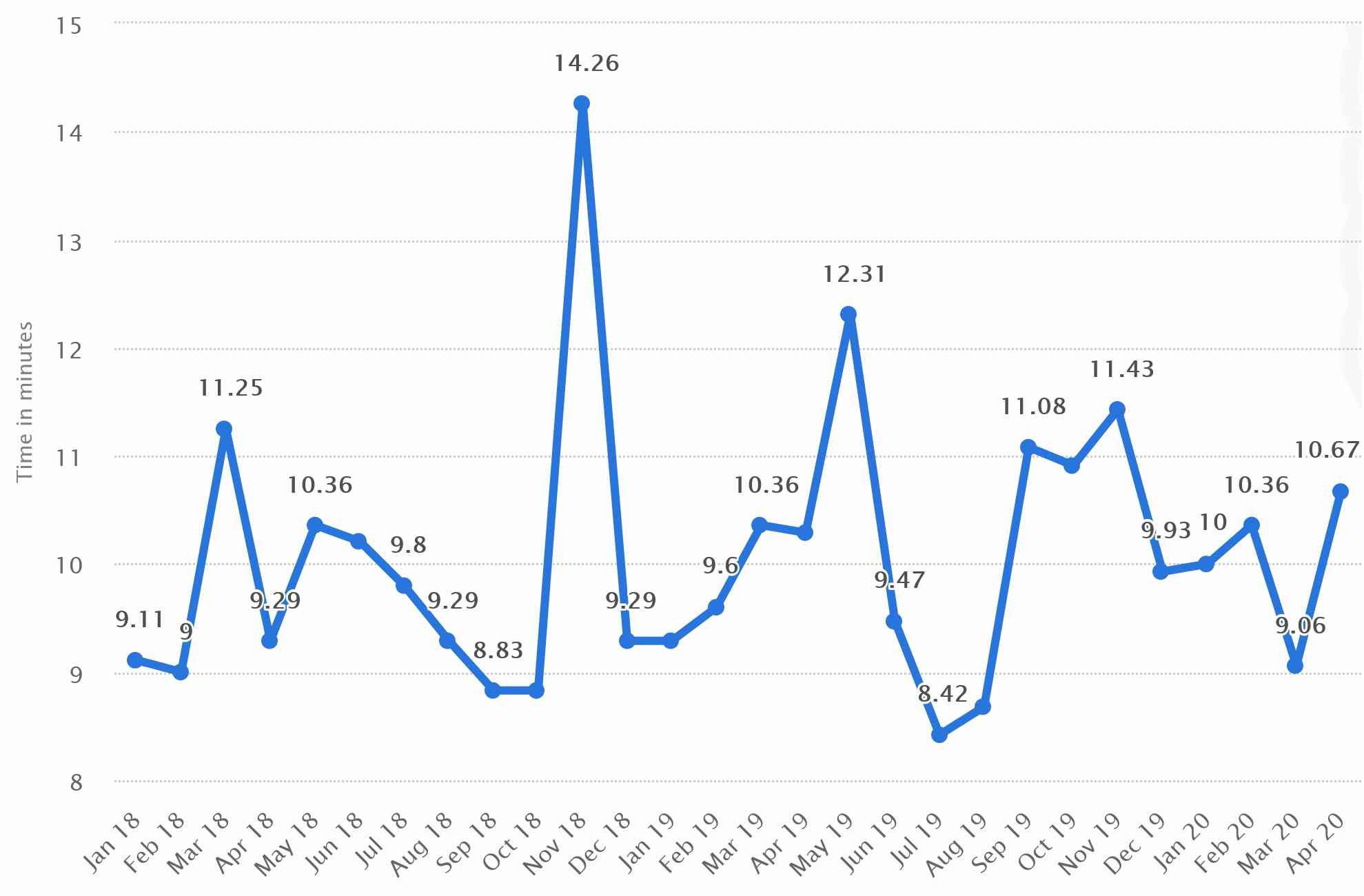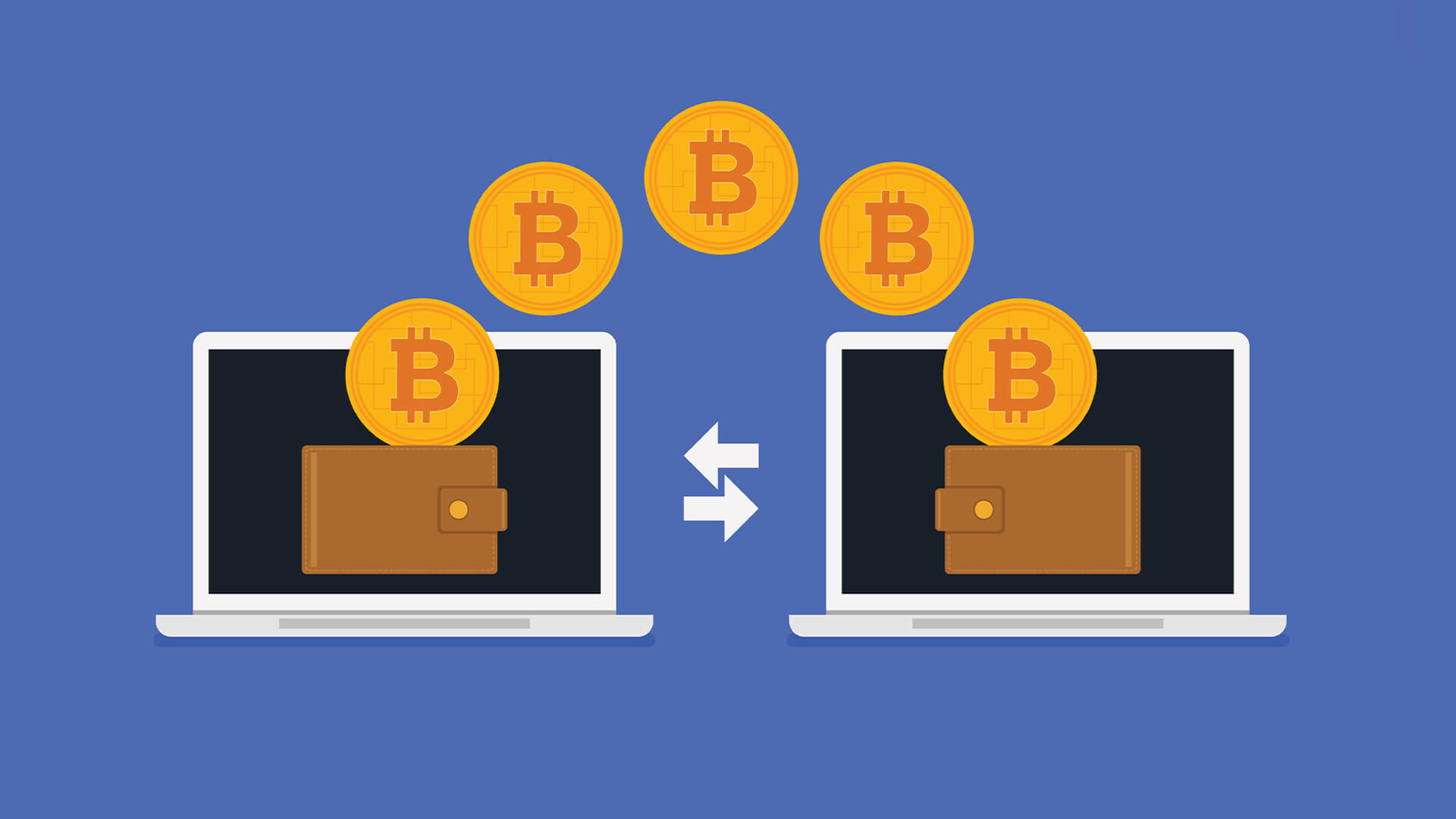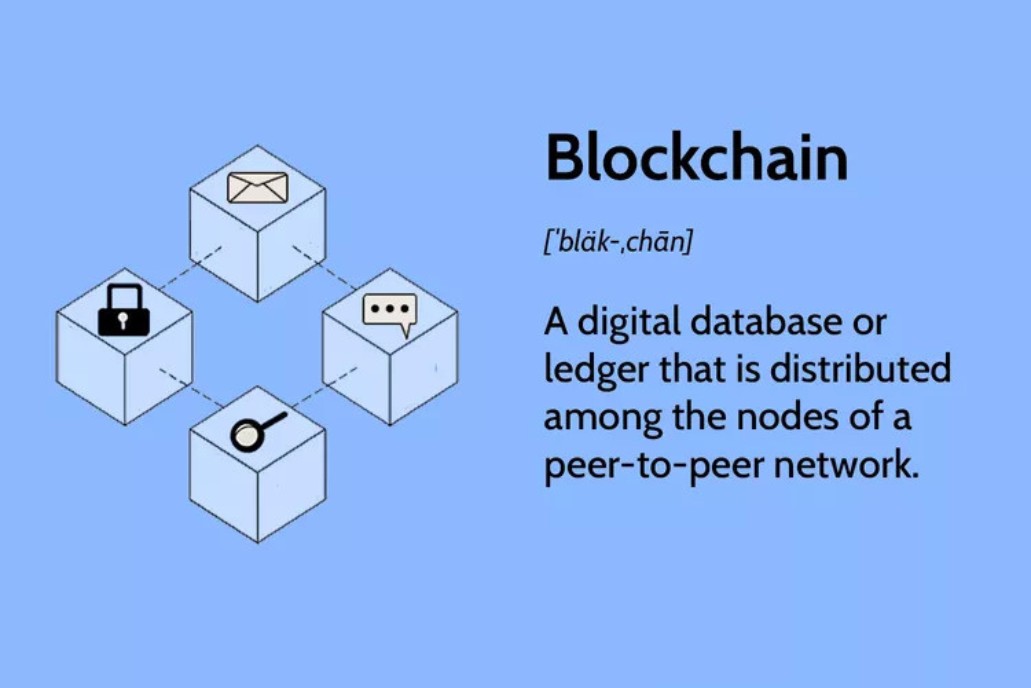Introduction
Blockchain technology has been making waves across various industries, promising to revolutionize the way we transact, share information, and conduct business. It has garnered tremendous attention due to its decentralized nature and potential for secure and transparent data storage.
Essentially, blockchain is a digital ledger that records transactions across multiple computers, eliminating the need for a centralized authority. The information recorded on the blockchain is stored in “blocks” that are linked together in a continuous chain. Each block contains a unique cryptographic signature, making it virtually impossible to tamper with or alter the data.
The concept of blockchain was first introduced in 2008 with the advent of Bitcoin, the world’s first decentralized cryptocurrency. Since then, blockchain technology has evolved and found applications beyond digital currencies, reaching industries such as supply chain management, healthcare, real estate, and more.
At its core, blockchain enables secure and transparent peer-to-peer transactions, transforming the traditional way we exchange assets, verify identities, and enforce contracts. By removing intermediaries and central authorities, blockchain technology has the potential to streamline processes, reduce costs, and enhance trust in a wide range of industries.
While blockchain technology holds great promise, it also faces certain limitations and challenges. Scalability, energy consumption, regulatory concerns, and interoperability issues are among the obstacles that need to be addressed for widespread adoption. Additionally, industries must grapple with the cultural shift required to embrace a decentralized ecosystem.
The adoption of blockchain technology is influenced by various factors, including technological advances, regulatory frameworks, and industry collaboration. As more organizations and governments recognize the potential of blockchain, the ecosystem continues to evolve, paving the way for greater integration and innovation.
This article explores the current state of blockchain technology, its applications across industries, and the benefits and risks associated with its adoption. We will also delve into the potential impact of blockchain on finance and the role of government regulations in shaping its future. Through examining these aspects, we aim to provide insights into the transformative power of blockchain and its significance in the digital era.
What is Blockchain?
Blockchain is a distributed ledger technology that allows multiple parties to store and verify information securely and transparently. It is a decentralized system that operates on a network of computers, called nodes, without the need for a central authority.
At its core, a blockchain consists of a chain of blocks, with each block storing a set of transactions or data. These blocks are linked together in a chronological order, forming a continuous and immutable record. The data stored in a blockchain is decentralized, meaning it is replicated and stored across multiple nodes in the network.
The key feature of blockchain technology is its ability to ensure trust and security through consensus mechanisms. Before a transaction can be added to the blockchain, it must be validated and approved by the majority of the network nodes. This verification process, often referred to as “mining” or “consensus algorithm,” ensures the integrity of the blockchain and guards against fraudulent activities.
The immutability of a blockchain means that once a transaction is recorded and added to a block, it becomes virtually impossible to alter or delete. This characteristic adds a layer of security and transparency to the data stored in the blockchain. It also eliminates the need for intermediaries or trusted third parties, as the decentralized nature of the technology enables direct peer-to-peer transactions.
Blockchain technology originated with the invention of Bitcoin in 2008. Bitcoin introduced the concept of a decentralized digital currency that operates on a public blockchain. However, the scope of blockchain technology extends beyond cryptocurrencies. It can be applied to various use cases, including supply chain management, healthcare records, identity verification, voting systems, and more.
Overall, blockchain technology is a revolutionary concept that has the potential to disrupt numerous industries by facilitating secure and transparent transactions. Its decentralized nature, verification protocols, and immutability make it an attractive solution for businesses and organizations looking to enhance security, streamline processes, and build trust in a digital world.
How Does Blockchain Work?
Blockchain technology operates through a complex series of steps that ensure the security and transparency of transactions. The following are the key components and processes involved in the functioning of a blockchain:
- Distributed Ledger: A blockchain consists of a distributed ledger that is replicated and stored across multiple nodes in a network. This decentralized approach ensures that no single entity has control over the data.
- Transactions: Transactions are the building blocks of a blockchain. They can represent the exchange of cryptocurrencies, recorded information, or the execution of smart contracts. Each transaction is encrypted and contains specific details such as the sender, recipient, and amount involved.
- Blocks: Transactions are grouped together into blocks. A block contains a unique identifier, a timestamp, a reference to the previous block, and a cryptographic hash that validates the integrity of the data. The creation of blocks follows a consensus mechanism among network nodes to ensure agreement on the validity of the transactions.
- Consensus Mechanism: Consensus mechanisms, such as Proof of Work (PoW) or Proof of Stake (PoS), are employed to ensure that all nodes agree on the validity of transactions and the order in which they are added to the blockchain. These mechanisms prevent malicious actors from tampering with the data and maintain the integrity of the network.
- Miners/Validators: Miners or validators are responsible for adding new blocks to the blockchain. In PoW-based blockchains, miners perform complex mathematical calculations to validate transactions and create new blocks. In PoS-based blockchains, validators are chosen based on the number of tokens they hold, and they validate transactions accordingly.
- Decentralization: Decentralization is a fundamental characteristic of blockchain technology. Each node in the network stores a copy of the blockchain, making it difficult for a single point of failure or tampering to occur. This decentralized nature enhances the security and transparency of the system.
- Consensus Algorithm: The consensus algorithm is the underlying mechanism by which agreement is reached among network nodes. It ensures that the majority of the nodes agree on the validity of transactions before they are added to the blockchain. This agreement prevents double-spending and ensures the integrity of the data.
Overall, blockchain technology works by creating a secure and transparent network where transactions are validated and added to a distributed ledger. Through the use of consensus mechanisms and decentralized storage, blockchain enables peer-to-peer transactions without the need for intermediaries or central authorities. This innovative approach has the potential to transform various industries by improving security, reducing costs, and increasing trust in digital transactions.
Current Applications of Blockchain
Blockchain technology has gained traction in various industries, offering solutions to address challenges related to security, transparency, and efficiency. Some of the current applications of blockchain include:
- Finance and Banking: One of the most prominent use cases for blockchain is in the finance and banking sector. Blockchain enables faster, more secure, and cost-effective cross-border payments, eliminating the need for intermediaries and reducing transaction fees. Additionally, smart contracts built on blockchain technology allow for automated and transparent execution of financial agreements.
- Supply Chain Management: Blockchain can revolutionize supply chain management by providing end-to-end traceability and transparency. With blockchain, each transaction and movement of goods can be recorded, ensuring that the information is secure, immutable, and auditable. This can help to prevent counterfeit products, reduce fraud, and improve the efficiency of supply chains.
- Healthcare: In the healthcare industry, blockchain can enhance data security, interoperability, and patient privacy. Blockchain-based electronic health records (EHRs) enable patients and healthcare providers to securely store and share medical data, ensuring its integrity and accessibility. Additionally, blockchain can facilitate the management and tracking of pharmaceutical supply chains, ensuring the authenticity and safety of medications.
- Real Estate: Blockchain technology can streamline and improve transparency in the real estate industry. By using blockchain-based smart contracts, property transactions can be executed digitally, reducing the need for intermediaries and minimizing the risk of fraud. Blockchain can also provide a secure and transparent record of property ownership, reducing disputes and simplifying the transfer process.
- Identity Management: Blockchain offers a solution to enhance identity management and verification processes. By storing identity information on a blockchain, individuals can have greater control over their personal data and choose how it is shared with others. Blockchain-based identity systems can reduce the risk of identity theft and provide a more efficient and secure way to verify someone’s identity.
- Voting Systems: Blockchain technology can improve the integrity and transparency of voting systems. By recording votes on a blockchain, the process becomes tamper-proof and resistant to fraud. Blockchain-based voting systems can increase trust in elections, ensure accurate counting, and provide transparency in the overall electoral process.
These examples represent just a fraction of the current applications of blockchain technology. As the technology continues to mature and new innovations emerge, we can expect to see even greater adoption in various industries, transforming the way we transact, share information, and conduct business.
Limitations and Challenges of Blockchain
While blockchain technology holds immense potential, it also faces several limitations and challenges that need to be addressed for its widespread adoption. Some of the key limitations and challenges of blockchain are:
- Scalability: One of the primary challenges with blockchain technology is scalability. As the number of transactions increases, so does the size of the blockchain, which can cause slower transaction confirmations and higher storage requirements. Solutions such as off-chain transactions and layer-two protocols are being explored to improve scalability.
- Energy Consumption: The mining process, especially in proof-of-work (PoW) blockchains like Bitcoin, consumes a significant amount of energy. This has led to concerns about the environmental impact of blockchain technology. The development of more energy-efficient consensus mechanisms, such as proof-of-stake (PoS), can mitigate this issue.
- Regulatory Concerns: Blockchain technology operates in a global and decentralized manner, posing challenges for regulatory frameworks. Governments and regulatory bodies are still grappling with how to address issues such as data privacy, legal compliance, taxation, and consumer protection in the context of blockchain-powered applications.
- Interoperability: Interoperability between different blockchain networks and platforms is currently limited. This lack of interoperability hinders the seamless exchange of data and assets across different blockchain ecosystems. Standardization efforts and the development of interoperability protocols are underway to address this challenge.
- User Adoption: For blockchain technology to reach its full potential, widespread user adoption is crucial. However, there is still a learning curve and skepticism among users who are unfamiliar with blockchain. Education, user-friendly interfaces, and clear use cases are necessary to overcome these adoption barriers.
- Privacy and Security: While blockchain is known for its security, there are still concerns regarding the privacy of stored data. As blockchain transactions are transparent and immutable, ensuring the privacy of sensitive information is a challenge. Innovations in privacy-enhancing technologies, such as zero-knowledge proofs and secure multiparty computation, are being explored to address this issue.
Addressing these limitations and challenges is crucial for the broader adoption and integration of blockchain technology. Ongoing research, technological advancements, and collaboration among industry stakeholders will contribute to overcoming these hurdles and unlocking the full potential of blockchain in transforming various sectors of the economy.
Factors Affecting the Adoption of Blockchain
The adoption of blockchain technology is influenced by a multitude of factors, spanning technological, regulatory, and business considerations. Understanding these factors is crucial in assessing the potential for blockchain adoption. Some of the key factors affecting the adoption of blockchain are:
- Regulatory Environment: Government regulations have a significant impact on the adoption of blockchain technology. Regulatory clarity and frameworks that ensure compliance and protect users’ rights are essential for organizations to confidently adopt blockchain solutions. The establishment of clear guidelines and standards can help foster a favorable environment for blockchain adoption.
- Industry Collaboration: Collaboration among industry players is crucial for the adoption of blockchain technology. Industries need to come together to define standards, develop interoperability solutions, and share best practices. Collaborative efforts help to build trust, create holistic solutions, and drive awareness about the benefits of blockchain within specific industries.
- Technology Maturity: The maturity level of blockchain technology plays a critical role in its adoption. As the technology evolves, challenges such as scalability, interoperability, and energy efficiency are being addressed. The development of user-friendly interfaces and tools, as well as the availability of skilled professionals, also contribute to the adoption of blockchain solutions.
- Cost and ROI: The cost of implementing blockchain solutions and the potential return on investment (ROI) are key factors for adoption. Organizations need to assess whether the benefits offered by blockchain technology, such as increased efficiency, reduced costs, and improved security, outweigh the initial investment and ongoing maintenance costs. Demonstrating a clear business case and tangible ROI is crucial in driving adoption.
- Ease of Integration: The ease of integrating blockchain with existing systems and infrastructure is an important consideration for adoption. Seamless integration with legacy systems, compatibility with widely-used software, and the availability of development tools and resources can help organizations overcome the challenges associated with integration, and accelerate the adoption of blockchain.
- Trust and Security: Blockchain technology is built on its ability to provide trust and security. Organizations need to have confidence in the technology, its underlying protocols, and the robustness of the system. Building trust through transparent governance, data privacy measures, and resilient security protocols is crucial for the widespread adoption of blockchain solutions.
These factors are interconnected and play a combined role in influencing the adoption of blockchain technology. Organizations and governments need to consider these factors when assessing the feasibility and potential benefits of implementing blockchain solutions. By addressing these factors, the adoption of blockchain can be facilitated, leading to greater innovation and transformation across various sectors.
Industries Likely to be Transformed by Blockchain
Blockchain technology has the potential to revolutionize various industries by enhancing security, transparency, and efficiency in business processes. While blockchain can be applied to many sectors, some industries are particularly well-suited for transformation. The industries most likely to be transformed by blockchain include:
- Finance and Banking: The finance and banking industry stands to benefit significantly from blockchain technology. Blockchain can streamline cross-border payments, improve remittance services, enable faster settlements, and enhance transparency in financial transactions. Additionally, blockchain-powered smart contracts have the potential to automate and streamline complex financial agreements and reduce fraud.
- Supply Chain Management: Blockchain has the potential to transform supply chain management by providing end-to-end visibility, traceability, and transparency. By tracking the movement of goods, verifying product authenticity, and ensuring ethical sourcing, blockchain can reduce fraud, increase consumer trust, and improve efficiency in supply chain operations.
- Healthcare: The healthcare industry can benefit from blockchain by improving data security, interoperability, and patient privacy. Blockchain can enable secure and consent-based sharing of electronic health records, reduce administrative inefficiencies, facilitate accurate patient identification, and enhance research by securely sharing health data while maintaining privacy and data integrity.
- Real Estate: Blockchain technology can transform the real estate industry by enhancing transparency and efficiency in property transactions. Blockchain-based smart contracts can automate contractual agreements, ensure the integrity of property records, and streamline processes such as title transfers and property financing. This can reduce fraud, enhance trust, and simplify the overall property transaction process.
- Energy: The energy industry can benefit from blockchain by enabling peer-to-peer energy trading, optimizing energy grids, and improving supply chain management. Blockchain technology can facilitate transparent and secure transactions between energy producers and consumers, enable efficient energy tracking, and support the integration of renewable energy sources into existing energy infrastructure.
- Logistics and Transportation: Blockchain technology can improve transparency, security, and efficiency in the logistics and transportation industry. Blockchain-based solutions can optimize freight tracking, automate document verification, enhance supply chain visibility, and streamline customs processes. This can lead to reduced costs, improved delivery times, and enhanced trust between stakeholders involved in global trade.
These are just a few examples of industries where blockchain technology shows great promise. However, blockchain has the potential to disrupt and transform many other sectors, including insurance, education, government services, entertainment, and more. As blockchain continues to mature and gain widespread adoption, innovative use cases and transformations are expected to emerge across a wide range of industries.
The Potential Impact of Blockchain on Finance
Blockchain technology has the potential to fundamentally transform the finance industry by improving security, increasing efficiency, and reducing costs. The decentralized and transparent nature of blockchain provides several opportunities for innovation and disruption within the financial sector. Here are some key areas where blockchain can have a significant impact on finance:
- Payments and Remittances: Blockchain can revolutionize cross-border payments and remittances by enabling faster, more secure, and cost-effective transactions. Traditional payment systems are often slow, expensive, and reliant on intermediary banks. With blockchain, peer-to-peer transactions can be conducted directly, eliminating the need for intermediaries and reducing transaction fees. Additionally, blockchain’s distributed ledger ensures real-time settlement and transparent tracking of payment transactions.
- Smart Contracts: Smart contracts are self-executing contracts with the terms of the agreement directly written into the code. Blockchain enables the secure execution of smart contracts, eliminating the need for intermediaries and automating contract enforcement. This can streamline complex financial agreements, such as loan contracts, derivative contracts, and insurance policies, minimizing the risk of fraud and improving efficiency in contract execution and settlement.
- Identity and KYC: Blockchain technology can revolutionize identity verification and Know Your Customer (KYC) processes within the finance industry. By securely storing and sharing identity information on a blockchain, individuals can have greater control over their personal data and simplify the KYC process when interacting with financial institutions. This can reduce compliance costs, enhance data privacy, and improve customer onboarding experiences.
- Asset Tokenization: Blockchain technology enables the tokenization of real-world assets, allowing fractional ownership and easier transfer of ownership. This has the potential to unlock liquidity in traditionally illiquid assets such as real estate, fine art, and private equity. Blockchain-based platforms can enable investors to participate in asset ownership and facilitate efficient trading of tokenized assets, improving accessibility and diversification opportunities.
- Supply Chain Finance: Blockchain can transform supply chain finance by improving transparency and trust in trade transactions. By recording transactions and verifying the movement of goods on a blockchain, lenders and financiers can have real-time visibility into the provenance of goods and reduce the risk of fraud. This can facilitate faster access to financing for suppliers and lower financing costs for buyers, enhancing the overall efficiency of supply chain finance.
- Regulatory Compliance: Blockchain technology has the potential to simplify regulatory compliance processes within the finance industry. By providing a tamper-proof and transparent audit trail, blockchain can facilitate efficient regulatory reporting and monitoring. Regulators can have real-time access to transaction data, improving regulatory oversight and minimizing financial fraud and money laundering.
These potential applications of blockchain within the finance industry demonstrate its ability to enhance security, streamline processes, and increase efficiency. While there are challenges to overcome, such as scalability and regulatory concerns, ongoing developments in blockchain technology and collaborations between industry participants and regulators will pave the way for the transformative impact of blockchain in finance.
Benefits of Blockchain Technology
Blockchain technology offers numerous benefits that have the potential to revolutionize various industries. By leveraging decentralized networks and cryptographic principles, blockchain provides the following advantages:
- Enhanced Security: Blockchain technology provides robust security measures that protect against unauthorized access and tampering. Each transaction recorded on the blockchain is encrypted, time-stamped, and linked to the previous transaction, making it virtually impossible to alter or manipulate the data. This enhanced security mitigates the risks of fraud and cyberattacks.
- Transparency and Trust: Blockchain’s transparent nature ensures that all participants in a network have access to the same set of information. Each transaction is recorded on the blockchain and can be verified by all network participants, thereby fostering trust and preventing disputes. This transparency also acts as a deterrent to fraudulent activities.
- Efficiency and Cost Savings: Blockchain eliminates the need for intermediaries, reducing the time and cost associated with traditional processes. The decentralized nature of blockchain allows for direct peer-to-peer transactions, streamlining cross-border payments, supply chain management, and contract execution. Automation through smart contracts also eliminates manual, time-consuming tasks, further increasing efficiency and reducing costs.
- Data Integrity and Quality: The immutability of blockchain ensures the integrity of the data recorded. Once a transaction is added to the blockchain, it cannot be altered or deleted, providing a reliable and auditable record. This helps in cases where data accuracy and authenticity are crucial, such as maintaining medical records or verifying the provenance of goods in supply chains.
- Decentralization and Resilience: Blockchain operates on a decentralized network, distributing information across multiple nodes. There is no central point of failure, making the system resistant to single points of attack or failure. This decentralization enhances the system’s resilience, increasing overall network stability and mitigating the risks associated with centralized systems.
- Improved Traceability: Blockchain enables end-to-end traceability of assets, goods, and transactions. Each transaction recorded on the blockchain can be tracked, providing a comprehensive audit trail. This traceability is particularly valuable in industries such as supply chain management, where ensuring authenticity and transparency are critical.
These benefits of blockchain technology have the potential to transform industries by increasing security, transparency, efficiency, and trust. However, it is important to consider the specific needs and challenges of each industry to fully realize the advantages that blockchain offers. With ongoing advancements and collaborations, the potential for blockchain to reshape business processes and drive innovation continues to expand.
Risks and Concerns with Blockchain
While blockchain technology offers numerous benefits, it is important to acknowledge and address the risks and concerns associated with its implementation. Some of the key risks and concerns with blockchain include:
- Regulatory Challenges: As blockchain technology evolves, regulatory frameworks struggle to keep pace. There is a lack of clear guidelines and standards, particularly regarding data privacy, taxation, and legal compliance. Regulatory uncertainty can hinder adoption and create challenges for businesses, especially in industries with strict compliance requirements.
- Scalability and Performance: Blockchain networks face challenges with scalability and performance as transaction volumes increase. Traditional public blockchains, such as Bitcoin and Ethereum, often encounter issues with slow transaction times and network congestion. Overcoming these scalability limitations while maintaining security and decentralization remains a significant challenge.
- Energy Consumption: Some blockchain networks, particularly those relying on proof-of-work (PoW) consensus algorithms, consume significant amounts of energy. The energy-intensive nature of mining operations raises concerns about the environmental impact of blockchain technology. The development of more energy-efficient consensus mechanisms, such as proof-of-stake (PoS), is essential to mitigate these concerns.
- Privacy and Data Protection: While blockchain provides transparency, the transparent nature of transactions can pose challenges to privacy and data protection. The immutability of blockchain means that once data is recorded, it cannot be removed or modified. This raises concerns about the permanence of potentially sensitive data and the need to comply with evolving data protection regulations.
- Smart Contract Vulnerabilities: Smart contracts, while powerful in automating contractual agreements, are not immune to vulnerabilities. Coding errors or vulnerabilities in the smart contract code can lead to exploits or unintended consequences. Auditing and secure coding practices are necessary to mitigate the risks associated with smart contract vulnerabilities.
- Interoperability and Standardization: Interoperability between different blockchain networks and platforms remains a challenge. With multiple blockchain implementations in use, ensuring seamless integration and collaboration across different networks is crucial. Establishing interoperability standards will enable the exchange of data and assets across various blockchain ecosystems.
- Education and Adoption: Blockchain technology is still relatively new and complex, requiring education and awareness for widespread adoption. The lack of understanding about blockchain may lead to skepticism and resistance to change. Organizations and individuals need proper training and knowledge to leverage the capabilities of blockchain effectively.
Addressing these risks and concerns with blockchain technology requires collaborative efforts between businesses, regulators, and industry stakeholders. Regulatory clarity, technological innovations, improvements in scalability and energy efficiency, and education are essential to maximize the benefits of blockchain technology while mitigating the associated risks.
Government Regulations and Blockchain
Government regulations play a crucial role in shaping the adoption and development of blockchain technology. As blockchain continues to evolve and disrupt various industries, governments around the world are grappling with how to address the unique challenges and opportunities posed by this emerging technology.
One of the primary concerns for governments is the regulatory framework surrounding blockchain and cryptocurrencies. Different countries have adopted varying approaches, ranging from strict regulations to fostering innovation through friendly regulatory environments.
Regulatory measures aim to protect consumers, prevent illicit activities, ensure data privacy, and maintain financial stability. Some key areas where governments are focusing their regulatory efforts in relation to blockchain include:
- Anti-Money Laundering (AML) and Know Your Customer (KYC) Regulations: Governments are keen on preventing money laundering and terrorist financing through cryptocurrency transactions. They are implementing robust AML and KYC requirements, obligating cryptocurrency exchanges and service providers to comply with customer identification and transaction monitoring regulations.
- Consumer Protection: Governments are concerned about protecting consumers who engage in blockchain-based transactions. They aim to ensure fair practices, prevent fraud, and provide mechanisms for dispute resolution. Regulations around crowdfunding, initial coin offerings (ICOs), and digital asset investor protection are being developed to safeguard investors’ interests.
- Data Privacy: Blockchain’s transparent nature poses challenges to data privacy regulations, such as the European Union’s General Data Protection Regulation (GDPR). Governments are examining the compatibility of blockchain with existing data protection laws and exploring ways to reconcile the transparency of blockchain with individuals’ right to privacy.
- Legal and Regulatory Certainty: Governments recognize the need for legal certainty in blockchain transactions. They are working to establish clear legal frameworks that define the rights, responsibilities, and enforceability of smart contracts and digital assets. This involves recognizing the legal validity of blockchain records and providing legal remedies in case of disputes or fraud.
- Taxation: Governments are addressing the taxation implications of blockchain and cryptocurrencies. They are working toward regulating the tax treatment of digital assets, ensuring proper tax reporting and compliance, and preventing tax evasion through blockchain-based transactions.
- International Cooperation: Blockchain and cryptocurrencies transcend national borders, requiring international cooperation in regulatory efforts. Governments are collaborating with each other and international organizations to establish standardized frameworks for cross-border transactions, information sharing, and regulatory harmonization.
Government regulations need to strike a balance between fostering innovation and protecting the interests of individuals and society. The regulatory landscape for blockchain is still evolving, and governments must stay responsive to technological advancements and industry developments to create an environment that encourages responsible innovation and widespread adoption of blockchain technology.
Future Outlook of Blockchain Technology
The future outlook for blockchain technology is filled with both excitement and potential. As blockchain continues to mature and gain traction, several trends and developments are shaping its future. Here are some key aspects to consider when looking at the future of blockchain:
- Increased Adoption: The adoption of blockchain is expected to grow across various industries. As businesses and governments recognize the benefits of blockchain technology, there will be increased integration into existing systems and processes. This will lead to greater efficiency, transparency, and security across multiple sectors.
- Scalability Solutions: To overcome the scalability challenges associated with blockchain, efforts are being made to develop and implement scalable solutions. Layer-two protocols, sidechains, and improvements in consensus mechanisms are being explored to enable faster transaction speeds and handle higher volumes of transactions.
- Interoperability and Standards: The adoption of interoperability protocols and standards will facilitate seamless communication and exchange of data and assets across different blockchain networks. As organizations and industries seek to integrate blockchain solutions, the development of interoperable systems will be crucial for collaboration and compatibility.
- Enterprise Blockchain Solutions: The focus is shifting from individual projects to enterprise-grade blockchain solutions. Businesses are exploring private or permissioned blockchain networks that offer enhanced scalability, privacy, and control. These private networks enable organizations to leverage blockchain technology while addressing specific industry needs and compliance requirements.
- Integration with Emerging Technologies: Blockchain is expected to synergize with other emerging technologies such as the Internet of Things (IoT), Artificial Intelligence (AI), and Big Data. This convergence has the potential to revolutionize industries by enabling secure and transparent data exchange, facilitating automation, and unlocking new business models.
- Regulatory Framework Development: Governments and regulatory bodies are working towards establishing clear and comprehensive regulations for blockchain and cryptocurrencies. The development of regulatory frameworks will provide a conducive environment for adoption, while protecting consumers and ensuring compliance with existing laws.
- Focus on Sustainability: The high energy consumption of some blockchain networks has raised concerns about its environmental impact. Future efforts will focus on improving the energy efficiency of blockchain platforms, exploring sustainable consensus mechanisms, and promoting environmentally friendly practices within the blockchain ecosystem.
These trends and developments point to a future where blockchain technology becomes more integrated into our daily lives. While challenges remain, such as scalability and regulatory concerns, advances in technology and collaborative efforts among stakeholders will drive the continued growth and evolution of blockchain. As blockchain becomes more widely adopted, it has the potential to reshape industries, streamline processes, and empower individuals in a decentralized and secure manner.
Conclusion
Blockchain technology is poised to revolutionize industries across the globe, offering enhanced security, transparency, and efficiency in various business processes. This decentralized and immutable technology has the potential to transform finance, supply chain management, healthcare, and many other sectors.
The benefits of blockchain technology are numerous. It provides enhanced security, fostering trust among participants and reducing the risks of fraud and cyberattacks. The transparency offered by blockchain improves accountability and promotes efficient transaction tracking. Moreover, blockchain technology can streamline processes, reducing costs and increasing efficiency through automation and elimination of intermediaries.
However, there are challenges and concerns that need to be addressed. Scalability, energy consumption, privacy, and regulatory frameworks require ongoing attention and development. Collaboration between industry stakeholders and governments is essential to create an enabling environment for blockchain adoption while safeguarding consumer protection and compliance.
Looking ahead, the future of blockchain technology is promising. Increased adoption across industries, innovations in scalability solutions, interoperability protocols, and the integration with emerging technologies will pave the way for further advancements. Governments’ efforts in developing regulatory frameworks will provide clarity and foster responsible innovation.
As blockchain technology continues to evolve, it is important for businesses and individuals to stay informed and adapt to the changing landscape. Education, awareness, and collaboration are key to maximizing the potential of blockchain technology and unlocking its transformative power.
In conclusion, blockchain technology represents a paradigm shift in how we transact, share information, and conduct business. Its potential to disrupt and transform industries is immense. By embracing the benefits, addressing the challenges, and working towards concerted efforts, we can shape a future where blockchain empowers individuals, enhances trust, and brings about greater transparency and efficiency in our increasingly digital world.

























